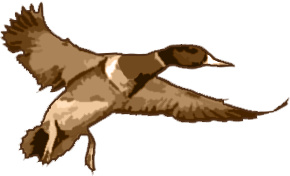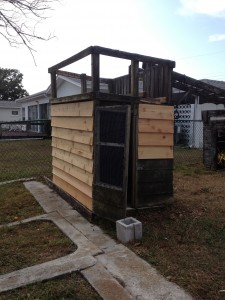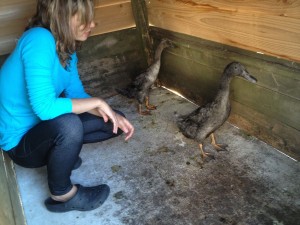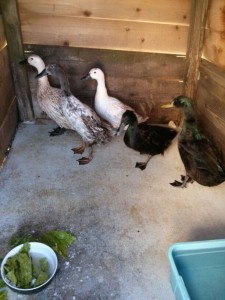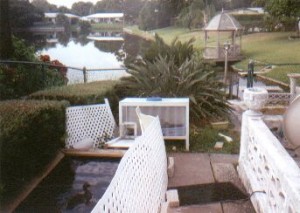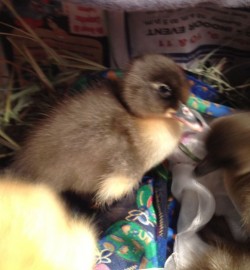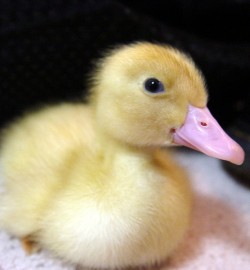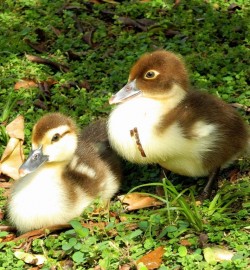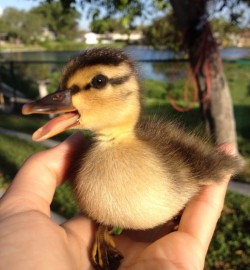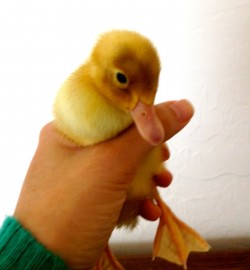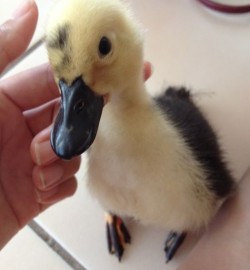We made our duck house walls with layered cedar boards. Cedar, unlike other types of wood, is extremely durable and doesn’t absorb water. The wood was painted with waterproof porch paint. This is important because duck houses get wet daily. The only drawback to cedar is that new wood pieces give off an odor which can be fatal to ducklings. It’s best to wait a few months for the smell to wear off before allowing ducklings to live in the house. The walls are layered just so that the leave about 1/4″ crack from the floor. This crack will allow poo to be washed away by a hose. You don’t want too big of a crack because snakes or other nasties will be able to come in.
The floors of a duck house are the most important part. They need to be waterproof and be able to stand up to the watery excrement. Our solution was to use cement boards. They are smooth enough that the duck’s feet don’t get scraped up but sturdy enough to stand up to daily wear and tear.
The best part is that the boards can be bleached every few months to get rid of stains. The roof is also made with cement boards which makes this duck house fully rain proof.
One window facing the front allows fresh air to flow through. The other walls are closed off which allows the ducks to keep warm in the winter and cool in the summer. When it gets too sunny or too cold, they enjoy going home to take a nap.
Duck house variations
If you can’t build one yourself, you can make an easy setup with an outdoor rabbit cage.
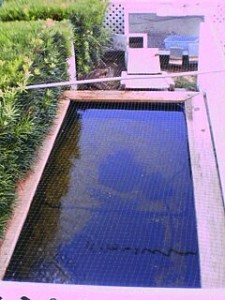 We cut a small hole in the far left corner of the cage so the ducks could walk in and out of the cage on their own. A plank connects the door to the pond so they have easy access to the water. Even though the ducks are relatively safe in the day, it’s important to make sure they’re locked up in the cage at night so raccoons can’t snatch them. Raccoons are crafty and able to reach birds through wires that are too large – I’ve had friends lose expensive Macaws that got eaten from inside their cages. All that was left were some stubby feet.
We cut a small hole in the far left corner of the cage so the ducks could walk in and out of the cage on their own. A plank connects the door to the pond so they have easy access to the water. Even though the ducks are relatively safe in the day, it’s important to make sure they’re locked up in the cage at night so raccoons can’t snatch them. Raccoons are crafty and able to reach birds through wires that are too large – I’ve had friends lose expensive Macaws that got eaten from inside their cages. All that was left were some stubby feet.
Netting will protect against crows , egret and hawk attacks. You can use a kiddie pool or alternatively
construct your own duck pond.
